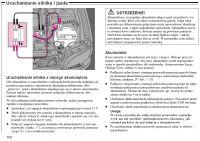Colleagues, don't argue about the details.
The author's thesis is not incorrect, and it does not matter whether the donor battery is 14.2V or 12V (under heavy load, the donor voltage will drop to a similar value).
Such currents are not healthy for the donor or recipient - but not catastrophic, because the alternator can also charge (discharged battery) with a high current determined by the voltage difference. Alternator is a rigid voltage source with high current efficiency - it can also be several dozen A.
Of course, I assume that the recipient's battery is still functional, just unable to start the car.
Only that such charging of the recipient's battery usually does not help much or nothing, or both batteries will become "recipients".
It would then be advisable after a short time of charging the recipient to start the donor's engine so that the alternator would help - even at low speed. But we have no control over the charging current, over the voltage - these are risky behaviors.
Usually you need to start the engine in a donor so that the alternator helps - and this is a much worse situation. Of course, for large currents (starter current + donor battery charging current) they need to be connected with thick jumper cables with strong crocodile clips clamping on the clamps, so there will be no voltage drops - but then the donor alternator, which wants to maintain 14.4V and suffers a heavy load, suffers it makes it impossible.
This is the best way to damage an alternator - it usually has a capacity of 70-100A and currents are drawn in the order of 200A and more.
After periods of severe frosts in the winter, electromechanical workshops are full of work - damaged alternators. Case?
I found out for myself - I started cars like that twice in one week (I didn't want to - but it was a son-in-law and a neighbor, it was difficult to refuse) and the next day the voltage regulator was to be replaced.
Therefore, both cases are not recommended, because they are risky, we have no control over currents there, the alternator may be overloaded. The car is used for driving and not as a mobile charging station.



